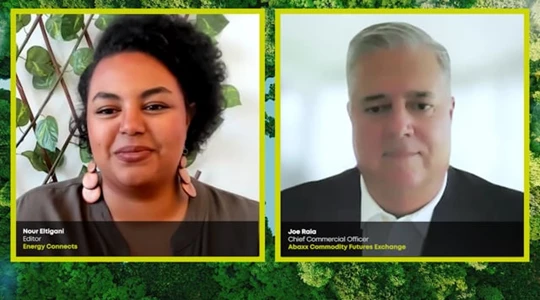BP’s Tumultuous Quarter Brings a Quiet Canadian Into Spotlight
(Bloomberg) -- Less than two months since Bernard Looney’s shock resignation, BP Plc is going into its first set of quarterly results without a permanent chief executive officer.
In his place will stand Murray Auchincloss, the 53-year old Canadian interim CEO who was parachuted into the top job from the position of chief financial officer after Looney admitted he had failed to fully disclose past relationships with colleagues. Two weeks later BP lost another high-profile executive when David Lawler, the head of the company’s shale business and president of BP America, departed to pursue other opportunities.

These high-profile departures and the lack of a permanent leader come at an unfortunate time, when European oil majors are at risk of falling even further behind their American counterparts amid a flurry of takeovers. Exxon Mobil Corp. and Chevron Corp. are ushering a new era of supermajors by spending a combined $113 billion on acquisitions just this month.
The US companies are planning for a future where oil and gas continue to play a key role, while BP and Shell Plc have only just begun to refocus on fossil fuels after embracing an accelerated energy transition during the pandemic.
“The board needs the move quickly and cement the position” of CEO, whether its with Auchincloss or otherwise, said RBC analyst Biraj Borkhataria. Without that there will be “unnecessary noise around whether the company is at risk of a takeout, and also, frankly, it may raise questions around the board itself given the lack of clarity around succession planning.”
Auchincloss has been at BP since the company’s merger with Amoco in 1998, where he had started his career in a finance role out of Calgary, Canada. Once at BP he rose through the ranks, holding a number of positions in London and Houston, including a stint as the chief of staff for Bob Dudley when he was CEO. Auchincloss was named CFO in 2020 a few weeks before Looney unveiled BP’s net zero strategy.
Moving from the role of CFO to CEO isn’t a well-trodden path in oil companies but there are precedents, notably as Peter Voser, who led Shell Plc from 2009 to 2014. Yet oil majors are also loath to hire their bosses externally and many of Looney’s peers at the company, such as Brian Gilvary, Dev Sanyal and Tufan Erginbilgic, left the company for other senior corporate roles after he took the top job in February 2020.
“Murray is the most prominent executive at BP now and the most well-known to the analyst and investor community,” says Borkhataria. “He is well-liked and well-respected.”
Contrasting Characters
According to people who have worked with Auchincloss directly, both within BP and externally, the interim CEO’s character stands in contrast to his gregarious predecessor. Looney, 53, was known in the company and beyond as a people person, with an uncanny ability to remember employees’ names and backgrounds, even in BP’s far flung operations around the world.
Looney had a team of social media-focused employees who uploaded snippets of content onto his Instagram and LinkedIn channels. He had “reverse mentors” chosen from among BP’s more junior employees and could be spotted at members clubs in Mayfair, one of London’s most exclusive neighborhoods.
Auchincloss is less of a social butterfly. He has shied away from the limelight, telling senior employees that he would be limiting interviews with journalists and would not be posting on social media, and is rarely seen in wearing suit around the company’s London headquarters, preferring casual dress. He has a young child with his partner, who is also a BP employee. That relationship had been previously disclosed and appeared in financial filings from April 2021.
International Appearances
Still, the Canadian native has been hitting the road since becoming interim CEO. Auchincloss has spoken on a panel at Abu Dhabi’s Adipec conference, met India’s oil and gas Minister, and hosted BP’s investor day in Colorado.
Earlier this month, he sat at the top table of the Energy Intelligence Forum’s gala dinner, a major London conference, flanked by industry leaders including Shell CEO Wael Sawan, TotalEnergies SE boss Patrick Pouyanne, Occidental Petroleum Corp.’s top executive Vicki Hollub and even his former boss Bob Dudley.
Auchincloss will be on familiar turf when he presents BP’s quarterly results on Oct. 31, having participated in them for the past three years. But while he was liked by investors and analysts for his strong grasp of detail and numbers, as interim CEO he will now have to answer larger, more existential questions about BP’s future.

The company’s stock has recovered from the depths of the coronavirus pandemic, but its valuation is half that of Exxon. And while BP grapples with its uncertain situation, its US rival is doubling down on oil and gas production growth its acquisition of Pioneer Natural Resources Co. By 2027, Exxon will be producing some 5 million barrels of oil equivalent, more than double BP’s output, which under its current plan will remain flat to 2030.
On the day after Looney’s resignation, Auchincloss stressed that BP’s strategy hadn’t changed. The company’s board has also said that whoever is named CEO must stick to the plan that’s already in place for the transition to low-carbon energy, according to people with knowledge of the matter.
As Exxon and Chevron’s mega-deals transform the industry, that may not be the best path.
“The problem now,” Citigroup analysts including Alastair Syme rote in a research note, “is that US IOCs are actively using their premium valuations to further enhance the oil and gas portfolio gap, and that risks European international oil companies being marginalized even further.”
©2023 Bloomberg L.P.
KEEPING THE ENERGY INDUSTRY CONNECTED
Subscribe to our newsletter and get the best of Energy Connects directly to your inbox each week.
By subscribing, you agree to the processing of your personal data by dmg events as described in the Privacy Policy.
More oil news

Oil Edges Higher Ahead of US Inflation Figures and OPEC Report

Oil Slips as Glut Outlook Outweighs Optimism on China Stimulus

Oil Edges Higher as Traders Weigh Fallout From Syrian Upheaval

China’s Solar Industry Looks to OPEC for Guide to Survival

Five Key Charts to Watch in Global Commodity Markets This Week

Oil Steadies as OPEC+ Opts Again to Delay Plan to Restore Output

NMDC LTS to acquire 70% equity stake in Emdad

Oil Holds Drop as OPEC+ Decision on Supply Takes the Spotlight

Shell and Equinor to create the UK’s largest independent oil and gas company
















